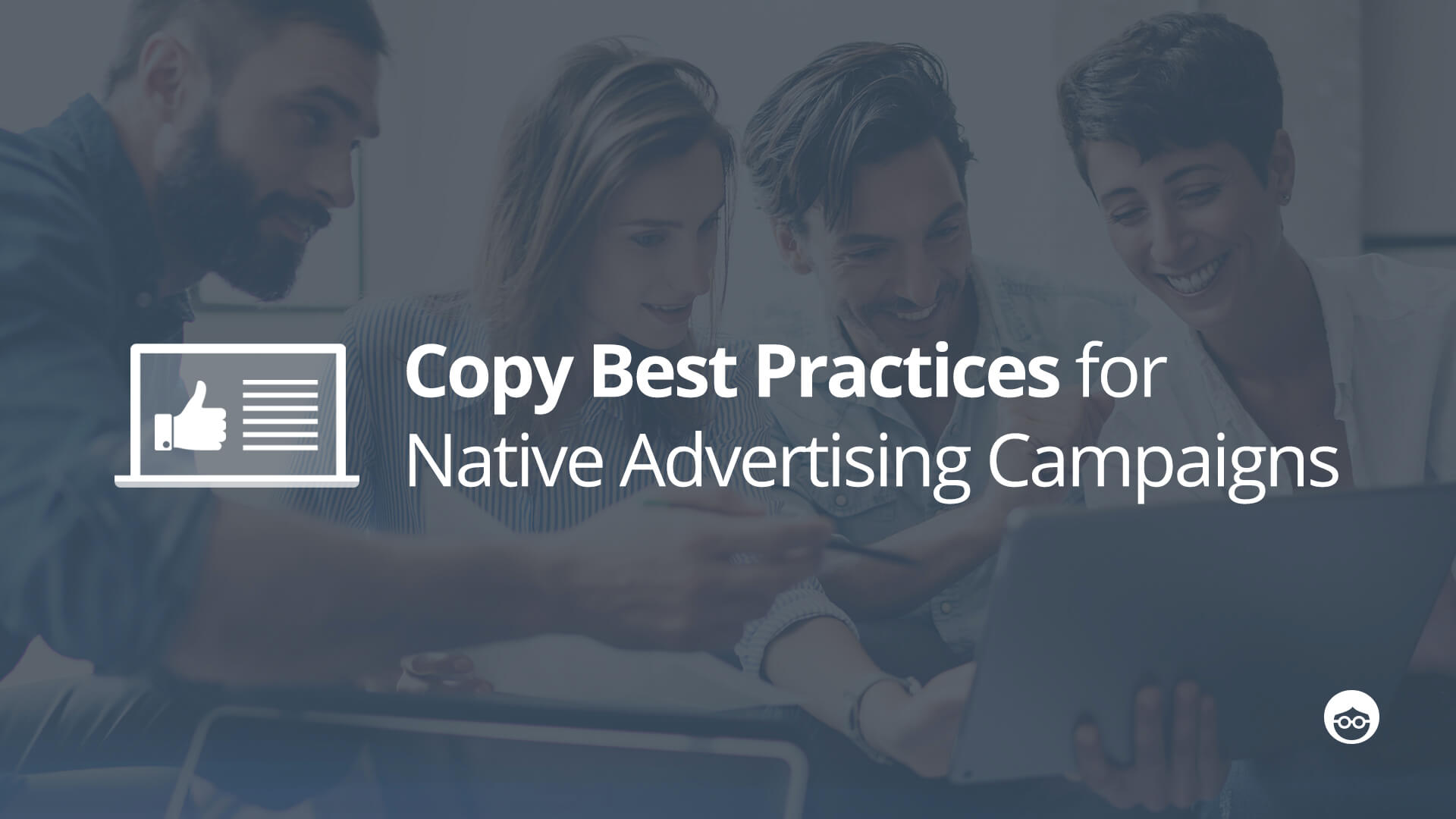Copywriting Dos and Don’ts for Native Advertising Campaigns

As native advertising continues to grow in popularity, gone are the days of traditional banner ads and pop-ups. Indeed, native advertising is projected to make up almost 60% of display spending this year.
Perhaps it’s no surprise — as paid content resembling the media format in which they appear, native advertising campaigns work more cohesively with their platform’s original editorial content than traditional advertising formats. Whereas banners and pop-ups appear intrusive to readers, native ads flow more naturally with their surrounding content.
But in order to achieve this effect, how do the rules of copywriting apply to native ads?
Check out the following copywriting do’s and don’ts to make your native advertising campaign more effective.
👍Do: Write for your ad format.
Native advertising isn’t a one-size-fits-all deal. There are six major types of native ad formats:
- Content recommendations
- In-feed ads
- Paid search units
- Search and promoted listings
- In-ad with native element units
- Custom ads that do not belong in any of the previous categories
Given this variety, copywriting should be specific to your campaign’s ad format.
For example, editorial stories that function as in-feed ads can afford large word counts, whereas paid search units and promoted listings have less room to work with.
With that in mind, your copywriting should suit the format of your ad. For shorter character limits, focus on directness; for longer advertorials, be creative about including anecdotes, testimonials, expert quotes, and more to better engage your audience.
🚫Don’t: Exaggerate or use misleading headlines.
Have you ever been disappointed by an article that promised more than it delivered? Clickbait titles may be eye-grabbing, but ultimately do more harm than good by falsely depicting a page’s contents.
These include overly sensational headlines like “The Number One Secret for Preventing Wrinkles.”
You don’t want to trick your readers, and hyperbolic headlines will likely annoy them more than enticing them. Moreover, these kinds of titles damage content integrity, making your site less trustworthy and dissuading potential customers from returning.
👍Do: Be transparent with your labeling.
Transparency helps readers distinguish between paid and organic content, which is crucial for maintaining a positive relationship with consumers. As the Federal Trade Commission outlines, a disclosure is necessary for protecting against customer deception.
Some may believe that native ads are intended to blend in seamlessly with their surrounding media format, but Contently’s 2017 study shows that disclosing sponsorship does not hurt ad performance.
In fact, clearly labeling your native advertisements does just the opposite, helping customers identify the brand behind the promotional content. It makes sense — an effective native advertising campaign should help strengthen a viewer’s impression of a brand.
🚫Don’t: Be wordy.
Brevity is your best friend when it comes to writing native ad copy. This applies to both headlines and body copy, as readers tend to scan web content rather than diligently read it.
Long strings of text overwhelm readers; moreover, thousands of similar but shorter articles are simultaneously competing for your audience’s attention. And when it comes to headlines, excess length will simply get cut off in a widget.
As such, your copy should be concise and to-the-point. Focus on providing the most value for your readers by nixing any repetitive information or unnecessary fluff.
👍Do: Include a clear call-to-action (CTA).
Without an obvious call-to-action, readers won’t feel particularly enticed to convert. The copy on your landing pages and articles in your native advertising campaign should include a clear CTA — and it helps to use copy that conveys value and relevance to the reader.
Including a CTA will help guide readers to the intended next step, whether it’s signing up for a newsletter, sharing a post on Facebook, or completing a purchase. Make sure your CTA is visible by positioning it front and center and making the rest of your content uncluttered.
🚫Don’t: Use passive voice.
Keep your passive voice to a minimum in your native ad copy. Though passive voice isn’t technically wrong, active voice delivers more captivating and engaging writing.
Consider these popular advertising slogans and how weak (and unusual) they sound when written in passive voice:
- McDonald’s: “I’m lovin’ it!” (active) → “It is being loved!” (passive)
- Red Bull: “It gives you wings!” (active) → “You are given wings!” (passive)
For inspiration, check out Buffer’s list of words that drive conversion, many of which are action verbs. Using active voice will not only liven your native advertising campaign but will also help increase conversion rates.
👍Do: Use research and specific examples.
A captivating headline reels in your audience, but in order to convert these visitors, your native ad campaign’s body copy needs to be persuasive.
Make your content more compelling and authoritative by including statistics, figures, and detailed examples for why your product or service is worth the purchase. Whereas vague language will leave readers confused, backing your claims with evidence will help build credibility and make for a more convincing sell.
🚫Don’t: Forget to proofread and spell check.
This major don’t is overlooked more than it should be. Run your native ad copy through spellcheck or a second pair of eyes, as an advertorial rife with misspellings and grammatical errors can reflect poorly on your brand.
In fact, in a study by the communications firm Global Lingo, 59% of those surveyed said they’d reconsider making a purchase from a website if it was error-ridden. Consequently, though some perceive them as minor offenses, typos actually undermine customers’ impressions of quality and professionalism.
Final Takeaways
Weak copywriting will bore readers and make it difficult for your message to resonate with them. To better meet your audience’s needs and guide them through your marketing funnel, strengthen your copy with these do’s and don’ts. Clear and engaging copy is the foundation for any successful native advertising campaign and will help you land more conversions in the long run.
Have any other copywriting tips for native ad campaigns? Share them in a comment below!












